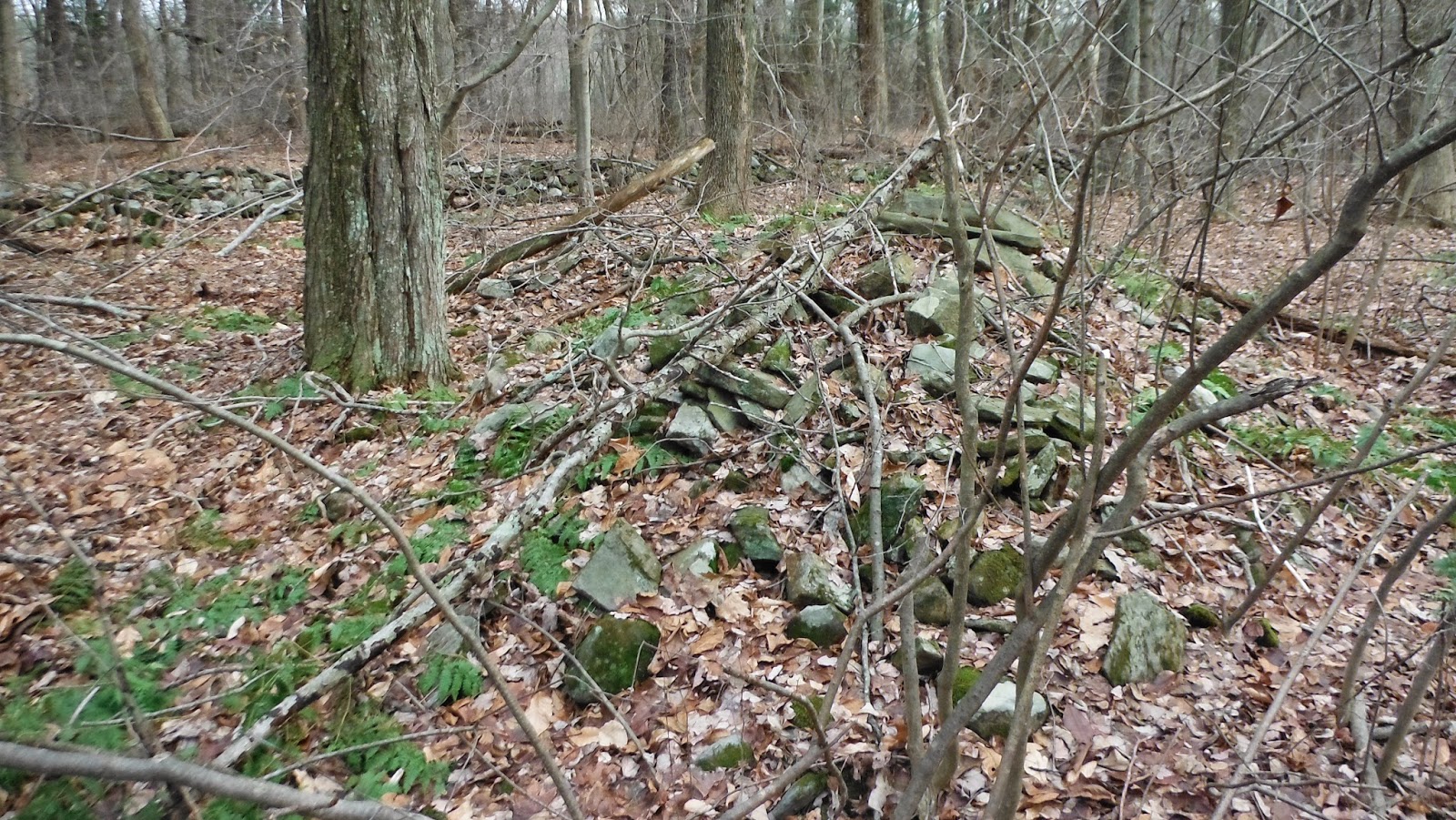I only scratched the surface when I was there before, and last weekend I did a more comprehensive tour of the western half of this conservation land. Followed the ridges west of Holt Pond towards the south, and swung east and back north along the central ridge there, and started seeing rock piles a little south of 'A' on the map.
After going a ways without seeing anything, you hardly believe it when rock piles do show up.
I was walking along the eastern edge of this ridge, trying to keep an eye on the valley to that side.
I saw a couple of things that could be rock piles on the more level height to my left. Went to take a look:
Poking around up there (still near 'A' on the map), I saw this pile built against a boulder:
This is essentially the same structure as I showed a couple days ago from next to Holt Pond (at 'D' on the map [see also comments in the past about how rock pile styles change to the north of Horse Hill]) and you know I consider this "gravelike". So now I start sniffing around for rock piles with hollows and, easily enough, found the messy structures I hoped to see - exactly at the height of land, looking north towards the river valleys.
Several shots:
We could regard this as a complete mess, or as something that has lost a lot of its shape. Up here on this rocky hilltop, there was no farming going on nearby. But look where the big rocks are, and where the small ones are. We see more of these "eyebrow" piles, delicately building out the natural outcrops:
And we look at the outcrops from below, so see how the piles spill over them:
Here we are looking east, the yellow spot trail crosses in the foreground - mounds built into every high point.
From there I went down into the valley, where the yellow spot trail crosses the brook near 'B' and found a different kind of site, with a "donation" style pile, and other low decrepit things along that valley of the brook.
One of those places where there are many piles lost underfoot. Here we are looking west towards 'B':
I went up this little valley, over a ridge and down to another wetland at 'C'. This is where we hit the kind of rock piles I like as much as any - the oldest form of rectangle with hollow: small enough for one or two occupants, so old as to be a simple bump in the landscape. They do not photograph well:
A sketch:
There were perhaps 6 of these around 'C' on a gradual slope over the water.
Another:
I am reasonably confident the people who traveled along the main rivers (we are about 1/2 mile from the Charles River) came up the brooks and lay their dead to rest in these quiet coves where the brooks begin. But they never got too far from the river. Some sought out the heights (at 'A') and others sought out the wetlands.
Look carefully:
Do you see two "arms" of structure with a hollow in between, facing into the wetland? That is how they sit today, almost gone from view.
A few outlying satellites:
Walking out of the conservation land, along the wet areas forming into the brook, there were a few other loose shapeless scatters:
I walked out via the orange spot trail, down the eastern side of Holt Pond. There were a few more piles there at 'D':
A full walk.



























































